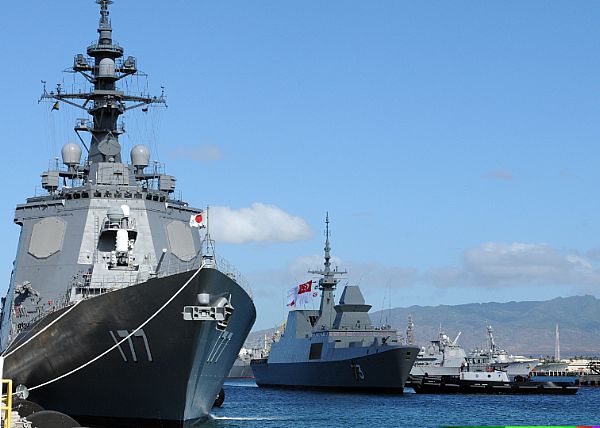 So China announces, in advance, that a set of naval exercises will take place from June 30 to July 5. And as expected, China fear-monger Andrew Erickson and the rest of America’s China “threat technicians” are freaking out.
So China announces, in advance, that a set of naval exercises will take place from June 30 to July 5. And as expected, China fear-monger Andrew Erickson and the rest of America’s China “threat technicians” are freaking out.
And why shouldn’t they? The idea of China launching an “anti-access exercise” over America’s 4th of July weekend is, admittedly, pretty hysterical stuff.
But…let’s just calm down. Pacific Grand Strategy is far, far too important to be left to over-excited threat techs.
I mean, is Andrew Erickson even remotely aware that RIMPAC 2010 is underway–and that on July 6, the day after China wraps up, RIMPAC’s operational phase begins?
One wonders.
To China, RIMPAC ain’t trivial. The operational exercise:
“…includes live fire gunnery and missile exercises, maritime interdiction and vessel boardings, anti-surface warfare, undersea warfare, and naval maneuvers, air defense exercises, as well as, explosive ordnance disposal, diving and salvage operations, mine clearance operations, and an amphibious landing. This phase exercises the ability of each nation to conduct robust command and control operations with multinational players and enhances each unit’s operational capabilities.”
And that’s just a warm-up for a larger-scale scenario-driven training event at the end of the month.
RIMPAC–no matter how one slices it–is one huge China-focused exercise.
Even more disturbing for China is that RIMPAC is one giant coalition-based affair. With Australia, Canada, Chile, Colombia, France, Indonesia, Japan, Malaysia, the Netherlands, Peru, the Republic of Korea, Singapore, Thailand and the U.S. gathering 37 ships, 170 aircraft and 20,000 personnel to do some serious stuff in the deep Pacific, no wonder China feels a little put out (India, Brazil and New Zealand are observing).
Threat techs of Andrew Erickson school kinda forget RIMPAC-like exercises pose a very real, very concrete threat to China.
Unlike China’s upcoming Anti-Access “exercise”–whatever it will entail–RIMPAC tests a whole constellation of fully operational assets. Unlike China’s “exercise”, RIMPAC allows several complex weapon systems (and strategies) to get a full, detailed workup. And finally, unlike China’s “exercise”, RIMPAC is on full public display. I mean, RIMPAC even has a twitter feed, for goodness sakes!
But no matter! With the help of the “fainting coucher” threat-techs–and at the cost of little more than the expenditure of a few old-model DF-21/CSS-5 missiles (like the ones used back during the ’95-6 Taiwan Crisis)–China is going to, again, trump the very real coalition-based achievements of RIMPAC. Lob a few old missiles and China will get huge press, while RIMPAC will sail along…largely un-noticed by Asia’s political leadership and general public.
For China, the way ahead is easy. By committing a bit of vaporware to some naval theatre, the PLA can sit
back and relax. The Andrew Ericksons of the U.S. defense policy community will do the rest–by throwing a hissy fit to further their happy career of over-inflating China’s military prowess.
With the Pacific Basin, America must take a new rhetorical approach. For a threat tech, a hissy fit may get press and sell books. But strategically, freaking out over China does nothing but project a sense of American weakness, scare the neighbors and weaken the regional commitment to America’s protective umbrella of Pacific Alliances. It is possible (though a tad harder) to project concern without fear–expressing anything else fits right into China’s strategic playbook.
It’s pure Sun Tzu–a body of work which I certainly hope Andrew Erickson has read in the native language…
But one can’t help but wonder.

{ 1 comment }
So is your entire blog just about criticizing and insulting other bloggers?
Comments on this entry are closed.